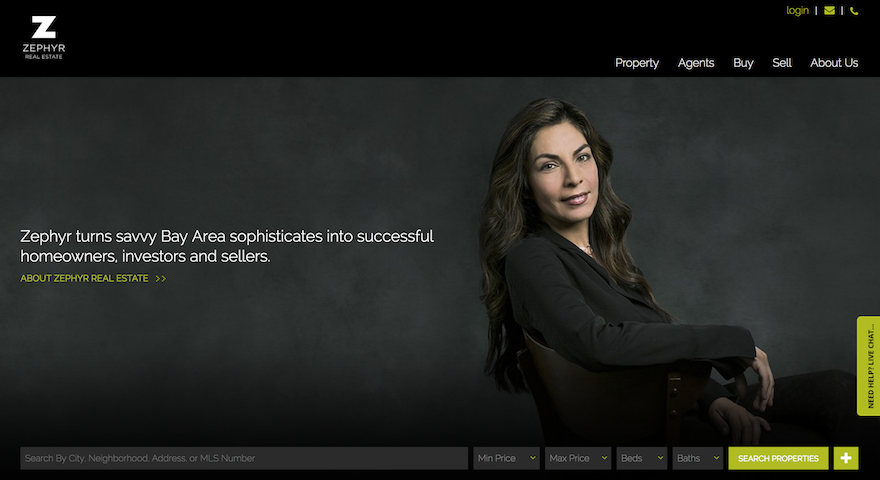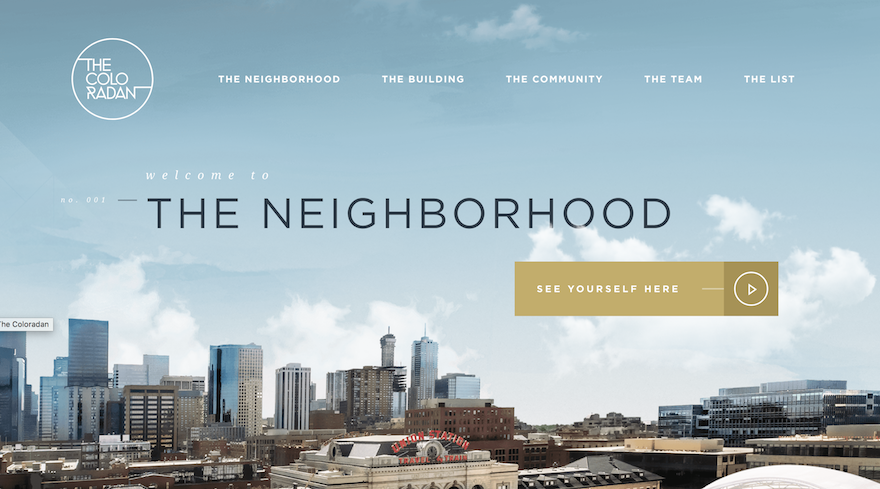Photography is the trend that will stay forever and real estate photography is what sells homes and your brokerage. And it’s no secret why.
The majority of people on this earth are visual learners. Sixty-five percent of us, in fact, according to the Social Science Research Network: Studies show we process images 60,000 times faster than text.
The strategy seems simple: just put big photos up. Every modern real estate website made in the last couple years is dominated by a large image or images when you load the page. Everyone got that memo and the rumors are that every website pretty much looks the same. This might seem inherently bad, but ultimately what I love about the Web is the ability for anyone with an Internet connection to get access to a wealth of information. That there is a sameness to modern web design may not sound ideal, but it allows for users to navigate through proven, easy-to-scan layouts that can work on any device.
So the strategy is still effective: Use big, detailed photos. I’ll scratch the surface on making your real estate photography more interesting than most of what is out there.
Original Relevant Real Estate Photography
To start, the most difficult part for many is to obtain the actual images. You have to hire the photographer, get your idea right, collaborate and edit. It’s a lot of time and investment, traditionally. But obviously tech is getting so much more sophisticated and your options are much more vast. You probably have a high-performing camera right in your bag or pocket— the average smartphone has a more than decent camera. All you have to do is get the composition and lighting correct. It is difficult, but not as difficult as pros make it out to be. Just check out Instagram sometime; there are tons of amazing accounts in there. Apple just put out a simple, handy guide specifically for the iPhone 7, but you can apply many of these rules to your own device. Just think about the message you want to convey and shoot something that you think represents it. It will never be 100 percent correct to everyone, but make sure you feel comfortable with it.
Learn About Our New Ads and Leads Program - TRIBUS Engage
But obviously the quickest route is simply buying an image, which is not the worst option, as there are a vast array of paid and free image galleries, my favorite free one being a site called The Stocks. Whenever possible, however, use your own photography, because obviously no one else has it. Our own client, Zephyr is a perfect example of taking great original real estate photography that fits their digital personality. Take a peek at their site.

Now, on to the website:
THE BASICS
Contrasting Color Overlays, Text & Size.
Use big images as backgrounds, put a transparent color on top of it, if necessary, and lay some text content over that. This is a striking combination when done correctly, where imagery may seem like the focal point based on size, they direct you to valuable content that is most important to the user.

Learn About Our New Ads and Leads Program - TRIBUS Engage
PRO-LEVEL
Subtle GIFS
The GIF is becoming more and more ingrained in our culture, but used with high quality photography, you can produce some stunning results known as cinemagraphs. It’s also a lower-size alternative to a video background. The trick here is to pick a specific area to animate that you can recreate on a loop, without affecting the overall photo. In the case of real estate, a shot of the city is a perfect scenario to use.

Micro Animation
When you incorporate small animations with your photography as you scroll, it attracts the eye to surrounding content and keeps your user interested. In this example from Adidas, they use a animations to illustrate weather conditions around the message they are delivering. They reinforce the message with clever animations as you hover over text.

VR
And the new kid on the block, virtual reality, is certainly an engaging option, but one that isn’t quite readily available to the masses as far as creation quite yet. But panoramic, interactive photography like the one used in this post from our own Jeff Harris will definitely set you apart from the pack in the Web landscape right now.
I often say that everything has already been done on the Web. In 2017, you can only do what somewhat else has done, but do it much better. I think some combination or balance of a couple of these ideas will produce a visually appealing platform as the foundation for great real estate content. It’s a great challenge we take on every day here at TRIBUS.

